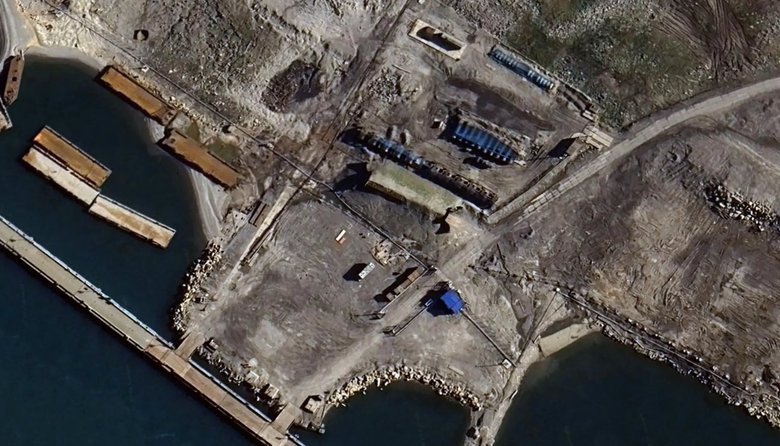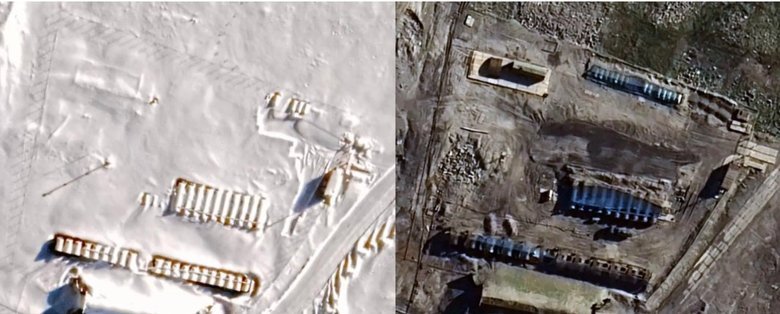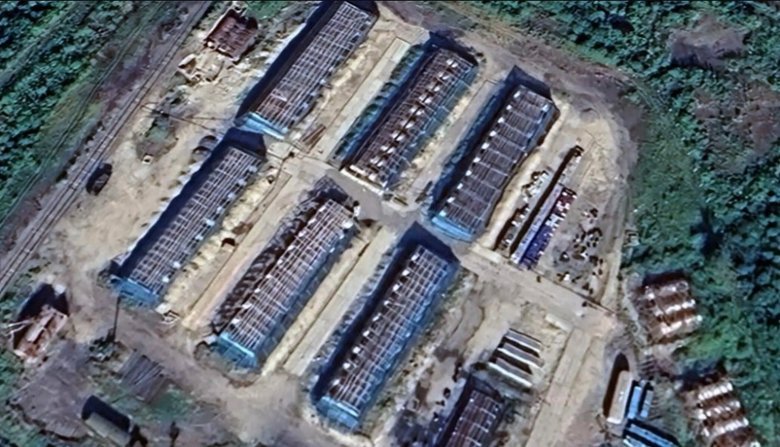Protective nets against drones have appeared at a secret Russian nuclear test site. SATELLITE IMAGES
Following a series of attacks by Ukrainian drones, Russia has begun to install protective nets against drones, even in places where no drone has yet reached.
According to Censor.NET, this was reported by The Barents Observer with reference to Google Earth satellite images.
It is noted that the protective structures appeared on Novaya Zemlya, an Arctic archipelago more than 2,500 km from Ukraine, where one of the most secret nuclear test sites of the Russian Federation is located. The bluish metal nets are installed over three rows of fuel tanks in the village of Severny. These tanks provide fuel for the nuclear test site facilities. The nets, known as "cope cages", are intended to prevent drones from exploding directly on the surface of the tanks and thus preventing fuel from igniting.

Satellite imagery from 14 August 2025 clearly shows the difference between the current state of the area and images from the winter of 2021, when the tanks were still open. Petrol tanks for landfill equipment are located near the port, while large fuel oil tanks for boiler houses still lack protective structures.

Such metal frames have already been installed at other Russian military facilities, including the Olenya airbase near Murmansk, which has been repeatedly targeted by Ukrainian drones. A large-scale attack on this facility took place on 1 June 2025 during the Operation "Pavutyna".

Analysts suggest that the new security measures may be a response to the development of Ukrainian cruise missiles and long-range drones. In August, Ukraine unveiled the FP-5 Flamingo, a missile with a range of up to 3,000 km, making even Novaya Zemlya a potentially reachable target.
"Russia is trying to extend the experience of protecting air bases and ports to remote Arctic sites. But this is more a reaction of desperation than a well-thought-out strategy," experts say.
In addition, the Russians fear that Ukrainian specialists know this training ground well. After all, it was a Ukrainian mining team that carved out underground nuclear test holes in the rocks between 1964 and 1990 in Soviet times. In memory of this, the main hotel in Severny was named "Ukraina".
Today, Severny is one of Russia's most secretive military towns. Although the last underground nuclear explosion there took place in 1990, subcritical tests are still being conducted at the site in mines located about three kilometres from the settlement. All work is supervised by the 12th Main Directorate of the Russian Ministry of Defence, which is responsible for the storage and transportation of nuclear warheads in close cooperation with "Rosatom".
In total, since 1955, Russia has conducted 132 nuclear and thermonuclear explosions on Novaya Zemlya, including the "Tsar Bomba", the most powerful in the world. After Vladimir Putin withdrew his ratification of the Comprehensive Nuclear Test Ban Treaty (CTBT) in 2023, Moscow began actively preparing the site for possible resumption of experiments. One tunnel has already been completed and another is under construction.
The complex, where "Rosatom" and the 12th Main Directorate conduct subcritical nuclear tests, is located about three kilometres south of Severny. Higher up the valley are dozens of tunnels where actual nuclear explosions took place between 1964 and 1990. Google Earth satellite images from 14 August 2025 show the current state of the area.
The appearance of drone nets on the Arctic test site may indicate not only fears of Ukrainian attacks, but also the realisation that modern warfare can reach even the most remote locations that previously seemed inaccessible.
